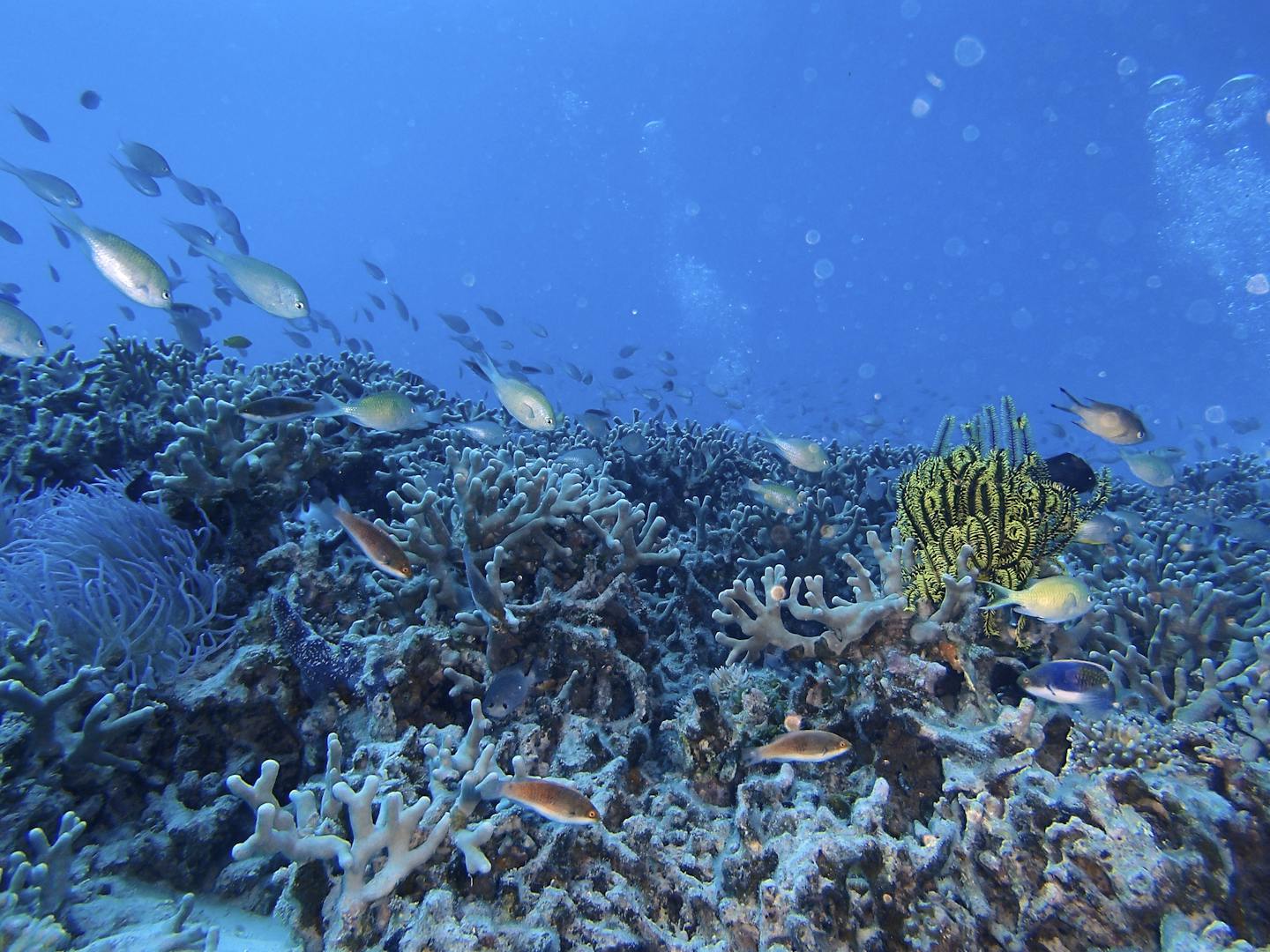With no sharks to fear, fish forgo defensive gear
This article is from Hakai Magazine, an online publication about science and society in coastal ecosystems.
Off Australia’s northwest coast, two neighboring coral reefs seem nearly identical. If you dove there, you’d find the same kinds of corals living in the same kind of water, with the same kinds of fish flitting through the polyps. But as you swam through the tropical waters, you’d begin to realize that something important is missing from one of the reefs. On Scott Reef, there are scarcely any sharks. From there, you may begin to look even more closely, and see the subtle signs that these two reefs are less similar than they first appeared.
For centuries, shark fishers from Indonesia have targeted Scott Reef. Next door, the Rowley Shoals have been protected as a marine reserve since the early 1990s. Now, in a new study, University of Miami marine ecologist Neil Hammerschlag and his colleagues have shown how the near depletion of sharks from Scott Reef has sent a cascade of subtle changes through the ecosystem—the signs of which are written on the bodies of the fish.
On Scott Reef, fish species that were once shark prey now have smaller tails and eyes than the same species on Rowley Shoals. Hammerschlag says the reason is straightforward: it’s no longer as important for Scott Reef fish to detect and escape sharks. The finding shows how removing a predator can affect its prey right down to their DNA.
Hammerschlag and his coauthors came to their conclusion after collecting fish from seven prey species from the two reefs between 2012 and 2014. The captured fish included different types of parrotfish, snapper, and bream. In total, the researchers analyzed digital images of 611 fish, comparing the dimensions of their bodies.
They found that fish of all seven species living on Rowley Shoals had tails up to 40 percent larger than those on the shark-depleted Scott Reef. Their eyes were up to 46 percent larger, too.
Larger eyes help fish notice predators sneaking up on them, and larger tails help them swim away more quickly. But, having these things takes energy, Hammerschlag says. Fish expend more resources to build larger eyes and tails—and to haul around those heavy tails. If these traits help a fish evade sharks and live another day, the cost is worth it. But in habitat with fewer sharks, fish with smaller eyes and tails prevail.
This change may have happened in two ways. One is natural selection. When sharks are present, they gobble up less well-adapted fish. Fish that are better at spotting and escaping sharks survive and reproduce. But when sharks are depleted, big eyes and tails are no longer an advantage, so these traits aren’t selected.
The other possible mechanism is called phenotypic plasticity. Fish can have a certain amount of flexibility built into their genes. If environmental cues tell them that predators are nearby, the fish’s bodies will develop differently. Although the study doesn’t reveal which mechanism is at work, Hammerschlag thinks natural selection is more likely, based on the type of changes and their magnitude.
“Whatever the mechanism is, it’s significant because the removal of sharks by humans is indirectly causing these changes in fish body shapes,” Hammerschlag says, “which might have repercussions for their fitness, and energy flow through the ecosystem, and who knows what else.”
Previous studies have found similar effects of predators on prey in controlled experiments. But it’s harder to see these effects in nature, says Brian Zgliczynski, a coral reef ecologist at the Scripps Institution of Oceanography at the University of California, San Diego, who wasn’t part of the new study. “I think the results are interesting and something that we definitely need to look into in further detail,” he says.
Already, other investigations on Scott Reef have found that prey fish there are fatter and more plentiful than fish on the Rowley Shoals. The changes could have implications for the organisms those fish eat, and so on through the food web. This kind of trophic cascade has been hard to document on coral reefs, Zgliczynski says, since these ecosystems are so diverse.
Humans who depend on those fish species for food or tourism could feel the effects too. “All these things taken together can have cascading consequences,” Hammerschlag says.
Read more stories like this at hakaimagazine.com.

